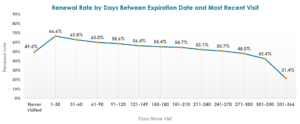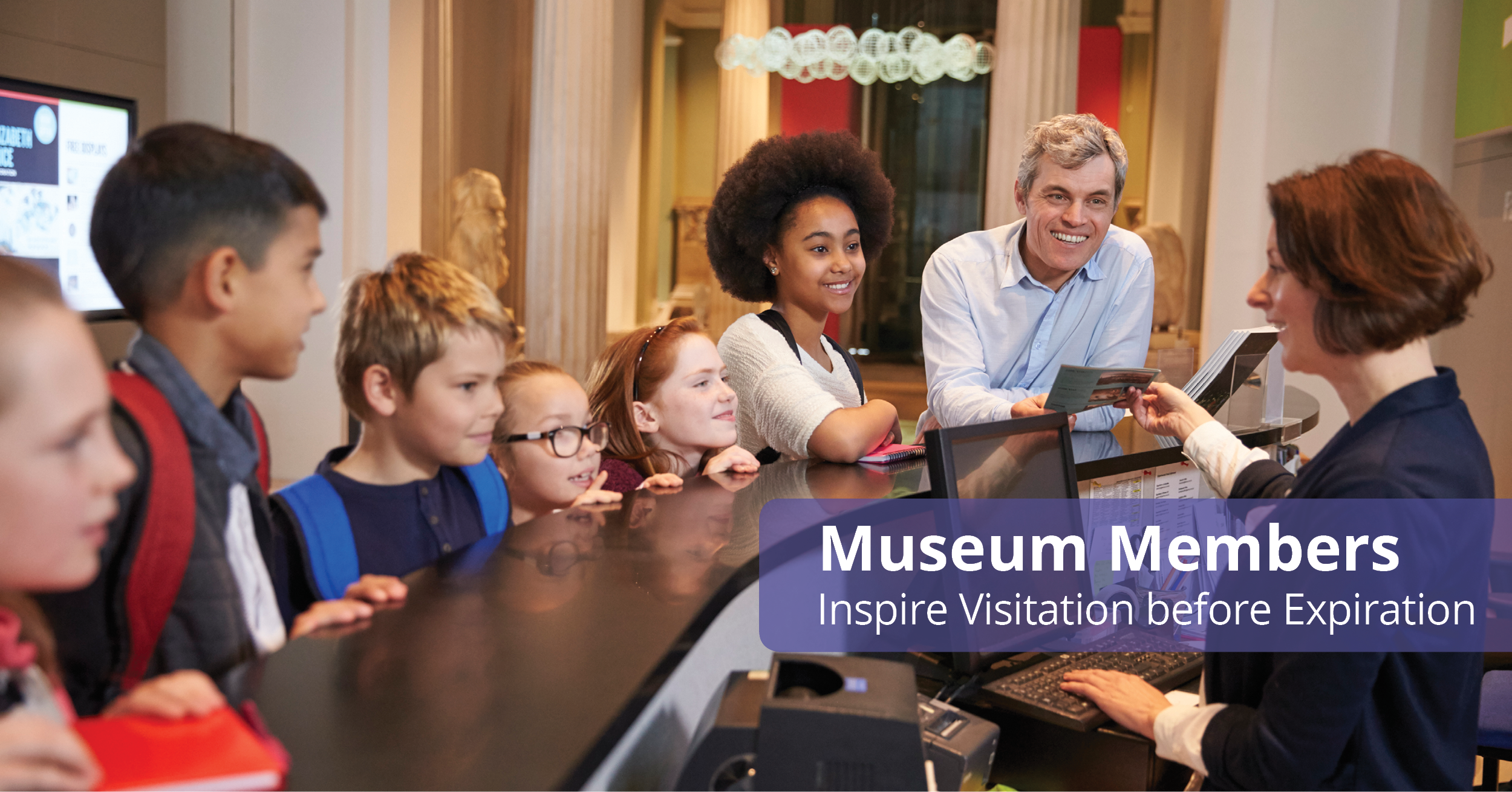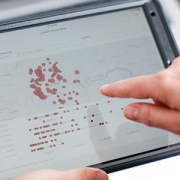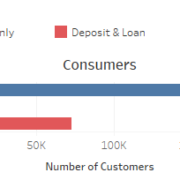Museum member renewal rates and visitation: get them in before they expire!
Note: this is the second in a series of three blogs exploring member renewals for museums and nonprofits. The first one explored the relationship between donations and renewals. Follow us on Facebook, Instagram, or Twitter for notifications when the last one comes out.
Earlier this week, we kicked off a mini-series exploring some key variables that affect member renewals for one of our clients, a history museum in Michigan, and the overall insights that speak to the nonprofit, museum, and cultural sectors on a whole.
We’ve been working with this museum for over 8 years to use data, analysis, and insights to better understand their members. This year, we have a clear goal: improve first and second year renewal rates. Not surprisingly, we turned to the data to find fact-based solutions and built a Member Renewal Model – a predictive tool that uses lifetime member data to identify the most important variables that we can control to positively change a member’s renewal rate.
While the model overall yielded a lot of really useful results, there were three really powerful variables that emerged that prove some key insights (and for those of us in the museum world, prove some long-rumored hypotheses!) that we can use various channels and tactics to try to control.
On Monday we explored the first insight, proving the power of small donations to member renewal. Today, we look at the relationship between visitation and renewing on time.

Member Renewal Insight #2: Members who visit within 90 days before their renewal date are more likely to renew
Or, to rephrase, the longer it’s been since a member has visited the museum, the less likely they are to renew. Let’s change that!
We investigated this relationship between renewal, visitation, and number of days before expiration date after reading Colleen Dilenschneider’s piece, Why Expired Members Do Not Renew Their Memberships. In short, she noted that one of the reasons lapsed members did not renew was that they planned to renew at their next visit. Which tells a larger story that the lapsed member never came in to visit and a larger action is needed to catch that slip in advance.
We decided to dig into this idea for our client and their members and found some important numbers to back this up on their end:
To start with the obvious, members who only visit near the start of their membership year renew at 21.4%. No one is probably surprised by this, but it’s always good when your data confirms assumptions.
More excitingly, there is a sweet spot in the data: a member who visits within the last 90 days before renewal sees a solid renewal rate between 60-67%. Within the last 30 days, we also know that front of house staff are trained to engage and remind members that their membership is about to expire to help accelerate any renewals right on the spot, but overall this tells us that a visit close to the membership expiration date really helps a member’s likelihood to renew.
We also checked overall frequency of visitation to see if we could find any other data trends that could help our goal to improve renewals. One other key point we found was: members who visit the institution three times in first five months have an average 67.5% renewal rate (a little higher than our group visiting 90 days before their expiration date). However, there are significantly more members (almost three times more) who visit in the last 90 days rather than those who visit three times in the first five months. If our overall goal is to identify actions that can improve the overall renewal rates for the most members, in terms on messaging, staff time, and member time it appears that driving a member to visit within the last 90 days before their renewal date will positively affect more people and ask less of everyone: it’s one ask (rather than three), it lets the museum team focus their messaging, and is the more likely behavior for more members.
Again, for those of us in the museum and cultural organizations sphere, it’s not too surprising that members who visit the museum are more likely to renew. They like you! Of course they’re going to come back! What this data does tell us is that there is a sweet spot and an opportunity to put it to use. It lets the museum focus visitation messaging on a smaller window to streamline communications, better segment their member base, and drive an overall better result from their members for all.
One last note: we can’t not mention the 49% renewal rate for a batch identified as “no visit.” The majority of this group are Year 3 and up members who are more invested in the museum overall. Since we’re focusing on raising the renewal rate for first and second year members, we wanted to look at actions and engagements that can help those groups.









